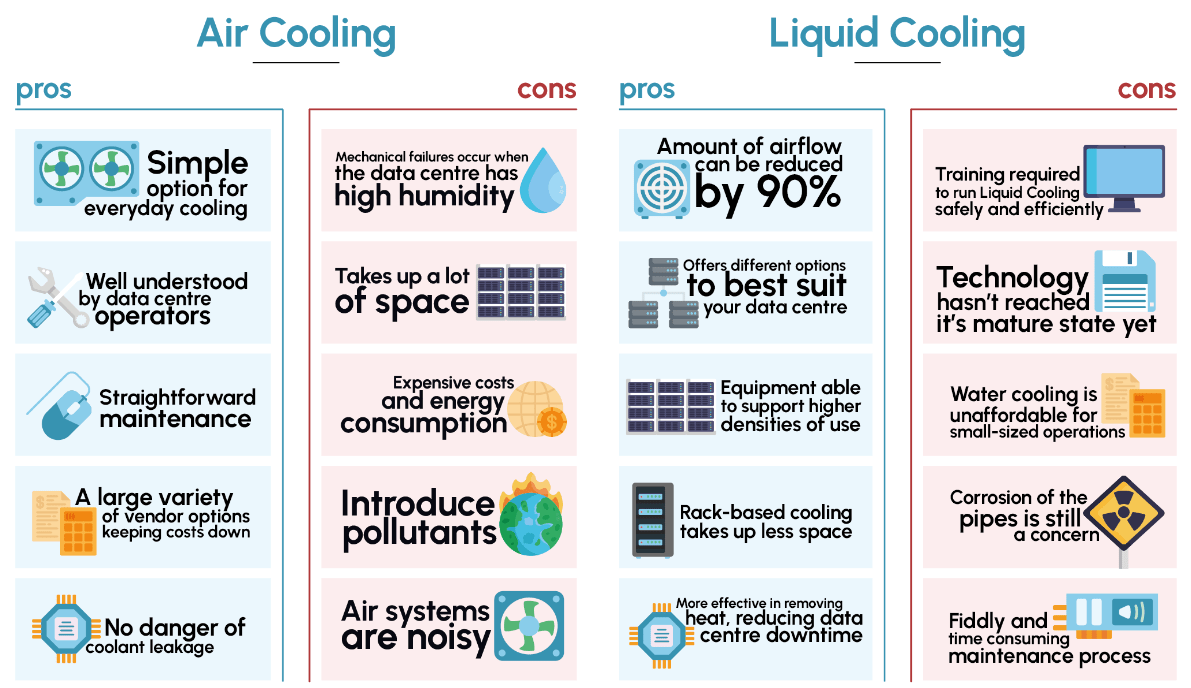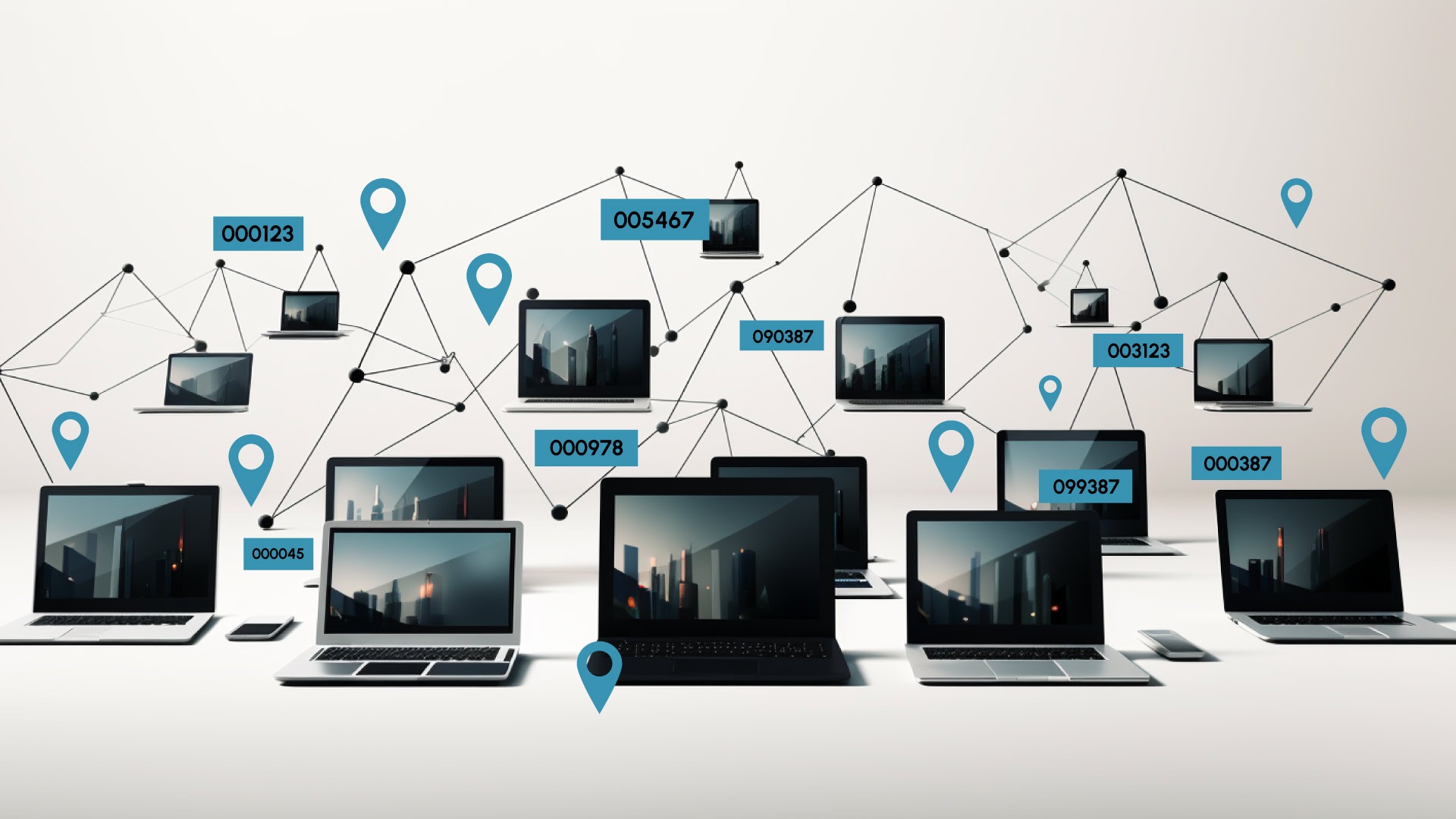Studies have shown that data centres use 10% of the world’s energy consumption, and in the UK alone, data centres, including colocation facilities, account for at least 12% of all UK energy consumption.
Some studies and forecasts even estimate that data centre power consumption alone could drain 20% of UK power generation in the next few years unless current trends don’t adapt to environmental concerns.
High costs go hand in hand with data centre cooling infrastructure; it’s precisely why some businesses are now moving away from on-site data centres and are looking to migrate to colocation sites. Without the proper data centre monitoring capabilities, on-premises data centres tend to be inefficient and outdated and cumbersome management software can make it even more challenging to optimise conditions.
Improper data centre management and poor processes can also lead to excessive heat generation, resulting in damage to equipment, system downtime and problems with servers – all of which are going to cost your business even more money and resources.
At the opposite end of the spectrum, but also a vital consideration, is the issue of over-cooling. Throughout our years of experience working with data centres of all sizes, one thing that we’ve found cropping up time and time again is that when companies don’t have accurate and comprehensive data about their systems, they actually start over-cooling their centres. With improvements in hardware capabilities, nowadays you just don’t need to keep your servers as cold as you think, or sometimes it’s even as simple as identifying obsolete equipment and therefore just not cooling equipment that isn’t even turned on!
Even the smallest data centre can save ££s simply through wise choices in management practices, IT hardware, power, and cooling infrastructure. As budgets come under more and more pressure, it is more critical than ever for businesses to know exactly what power they are using, how much capacity is available and where improvements and efficiencies can be made. By using next-generation data centre software solutions, businesses can be better prepared for future challenges and make those all-important energy and cost savings, without compromising business critical needs.
Table of Contents
ToggleWhat Cooling Methods are Best for Your Data Centre?

There’s no getting away from the cold, hard fact that data centres represent a growing share of global power consumption and emissions. Increasing and optimising your data centre environmental monitoring with smart and dynamic software solutions will no doubt help save you money and resources.
However, when it comes to the physical cooling of your racks and servers, the options for data centre managers can be confusing – which method is best? Even though both air and liquid cooling technologies prevent CPU overheating by transferring heat to a radiator where fans transform it into hot air – they get to this stage through two very different methods, and operate at different levels of efficiency to do so.
The answer is – it depends on you and your business needs! Traditional air cooling methods still maintain safe operating temperatures, while liquid cooling allows you to be more targeted with what and where you cool. Until recently, data centre managers faced with cooling challenges saw air cooling methods as the only viable option – but with more and more pressures placed on the performance of data centres with ever higher demand, higher densities, ever more powerful processors and an urgent need to reduce costs and emissions, many professionals have realised that air cooling alone isn’t an entirely future-proof option.
How do these cooling methods fit with modern data centre requirements, and how can advances in these technologies reduce cooling costs and environmental impacts?
Air Cooling
Historically, it’s often been the case that data centres had little choice when it came to meeting operating requirements and overcoming cooling challenges – air cooling was the best way forwards in terms of reliability and rollout. Although air cooling technology has advanced considerably in recent years, there are still fundamental issues with using it as a sole source of data centre cooling.
Air cooling systems take up a lot of precious space within a data centre as well as taking up a lot of your budget with substantial energy consumption and costs. Air cooling systems are noisy, and introduce pollutants, and problems often occur with mechanical failures and when moisture is reintroduced into the data centre environment through humidity.
Having said that, the benefits of air cooling systems lie in the fact that they are very well understood by most data centre operators and maintenance is pretty straightforward with easily transferable skills. Your team will be familiar with recognisable systems and operations making it a simple and safe option for everyday cooling.
Additionally, there are usually many more available vendor options for air cooled facilities than you might find with liquid cooling; this widespread use means that costs can be more easily kept down.
Liquid Cooling
When liquid cooling systems were first introduced, they tended to be over-complicated, expensive and to be honest, a bit messy. Since then, progress in the technology has meant that now, new-generation liquid cooling provides data centre managers with better efficiency and a more effective system. Liquid cooling is clean, offers better targeting of what you want cooled and allows for more straight-forward scaling of operations –
Liquid cooling systems are just so much more efficient than air cooling systems – and so are better suited to data centres using powerful CPUs or multiple systems. Your processors and servers can run hotter without blowing your cooling system’s capabilities, and in fact, because of the reduced need for fans, your amount of air flow can be reduced by up to 90%!
Liquid cooling also offers you different options, depending on your data centre’s specific needs and capabilities. The immersion cooling system makes use of a leak-proof case around the hardware which is submerged into a non-conductive liquid. The liquid absorbs the heat efficiently and when turned into vapour, condenses and re-joins the fluid to start cooling again!
Direct-to-chip cooling uses pipes to deliver liquid coolant directly to the motherboard chip, and keeps processors at an optimal temperature in all climates and under any load. The extracted heat is then delivered to a chilled-water loop and transported back to a cooling plant. Because this method is so precisely targeted and so effective in dispersing excess heat, your equipment is able to support higher densities of use.
There are downsides to liquid cooling however. Unlike traditional air cooling methods, data centre professionals are likely to need upskilling to safely and efficiently run a liquid cooled system, resulting in training costs or completely new staff sets. New processes and practices will also need to be implemented, and as the liquid cooling technology is ever-adapting as the technology evolves to maturity, a business may wish to stick with traditional systems as they figure out whether it’s right for them.
The Future’s Looking Pretty Cool
With increasing demand for data from businesses and consumers, how can data centre companies reconcile their sustainability responsibilities and spiralling energy costs with the need to meet business critical data needs – and continue thriving?
Some companies have started to explore the concept of ‘free’ cooling – that is, moving data centres to naturally colder climates to take advantage of a colder environment, without the need to artificially recreate it. It’s an economical method of using lower external air temperatures to reduce cooling costs and energy consumption. These cold locations, in places such as the Arctic Circle or the Nordics, could see the future of large colocation data centres being moved here for low cost cooling and power alongside the potential for unlimited renewable energy generation through low-emission hydropower.
The data centre management industry is constantly evolving, from new technologies to more enlightened sustainability goals. It’s vital to ensure your data centre is ready to reconcile business critical demands with the ever increasing challenges around energy consumption, sustainability concerns and rising energy costs. Businesses using data centres need to embrace new methods and technologies to properly be aware of and accurately understand what assets they have – only then can they be managed efficiently and effectively.
Assetspire is dedicated to providing better software to our clients to help businesses succeed. Our solutions and services have been designed and built based on our experience from working with some of the largest enterprises around the globe and we empower businesses with the visibility and insight they need to make more intelligent strategic decisions and more effectively manage the lifecycle of their assets.




